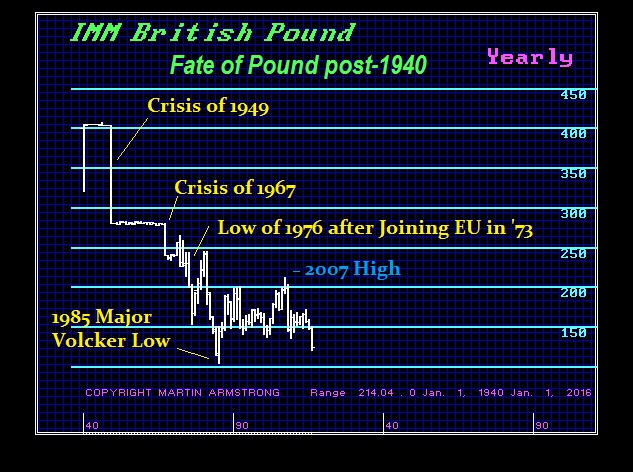From Behind the Wall – Mexico
US-Mexico Border in Arizona
COMMENT: Greetings from the other side of the Wall (i.e. Mexico)
Mr Armstrong! First, I would like to thank you for what you do, as a young person committed with helping the world thrive I cannot tell you how empowering it was to discover your work and get to know your story, and how inspiring it is to see upright people like yourself and your team take on the biggest challenges we face today as a planet, being consistent with what you say and actually doing something! That been said I wanted to share something that’s happening here in Mexico City, and because it is related to one of the main topics of your blog, i.e. the hunt for taxes I thought it would be worth sharing. Right now, Mexico City is going through some administrative changes. Beginning in 2018 Mexico D.F. (D.F. stands for Federal District) will no longer be the center of the powers of the federation but the 32nd federal entity of the union. That doesn’t only mean that Mexico D.F. will officially change its name to Ciudad de Mexico (CDMX) but that by the end of this month (January, 2017) CDMX will have its own Constitution. It is here that it gets interesting. In its 21st article, the draft proposed that “the increase in the value of the land derived from the process of urbanization, will be considered part of the public wealth of the city” that effectively meant that all the capital gains of a property will be taxed!! This resulted in a strong opposition specially from groups, associations and businesses concerned with the real estate business. The mayor of the city, surprised and pressured, answered that he would veto any new tax that comes into his desk and proposed an immediate modification of this article, which makes you wonder if he read the draft of the constitution in the first place! After the announcement, the commission in charge of the ruling of that article said it would be revised and modified so that a tax of this nature would not be allowed.
Fiufff!! That was close and everybody went home or headed out to the beach for some sunny winter holidays. Oh wait, except that our “public servants” being the way they are, apparently removed the provision from the draft of the constitution but still added it to the Housing Act which authorizes the administration to “implement mechanisms to capture capital gains, generated form urban development actions”. The Act was passed a nd approved the 26th of December!! The press reported this until the 28th which in Mexico is our April fool’s day, making us wish it was a terrible “December fool’s day” joke. I guess you have to have a sense of humour. I mean this guys are relentless when it comes to making a dishonest buck. I don’t know what Socrates says about Mexico but from my biased point of view it doesn’t look pretty. Higher prices, higher taxes, insecurity, a higher dollar, a debt worth almost 50% of GDP and growing, which at least I think it’s in pesos so I guess it could be worse. I was not alive then but there was a time when the peso fell greatly against the dollar maybe Mexico’s cycle is back down but I’m sure you know that. But there was also a time when the peso was close at par with the dollar, which makes me wonder when does the cycle turn up. Anyway, I guess by that time it’s either a strong peso or a worthless dollar!
Again, thank you and your team for all your work. Have a wonderful and spectacular year!
XA
REPLY: Hello from the other side of the wall. Most people do not realize that the Mexican 8 reales silver coin was commonly known as the “pillar dollar,” and cutting it up into pieces like a pie is what we hear in pirate moves — a piece of eight, meaning a piece of this coin. Here is a piece of eight stamped “St Lucia” for a Caribbean island.
 These pillar dollars or Spanish dollars as they were known, were widely used by many countries as an international currency in modern times because of its uniformity. Some countries countersigned the Spanish dollar so it could be used as their local currency, as did even Britain during the shortage of currency under George III. In fact, these pillar/Spanish dollars were the coin upon which they originally constituted the United States “dollar” as they refused to adopt the British system of pounds. In fact, pillar/Spanish dollars were actually considered to be legal tender in the United States up until the Coinage Act of 1857.
These pillar dollars or Spanish dollars as they were known, were widely used by many countries as an international currency in modern times because of its uniformity. Some countries countersigned the Spanish dollar so it could be used as their local currency, as did even Britain during the shortage of currency under George III. In fact, these pillar/Spanish dollars were the coin upon which they originally constituted the United States “dollar” as they refused to adopt the British system of pounds. In fact, pillar/Spanish dollars were actually considered to be legal tender in the United States up until the Coinage Act of 1857.
 Most people have no idea that the Mexican peso (8 reales ceased to be issued in 1897 after it was replaced by the peso) was on par with the dollar, and in fact, the US dollar was based upon the peso. The debasement of the 8 reales (peso) began slightly in 1729 when it was reduced to .7972 of a troy ounce down from .8102. It was debased slightly again in 1772, dropping to .7858 oz followed by another slight debasement to .7797 in 1791.
Most people have no idea that the Mexican peso (8 reales ceased to be issued in 1897 after it was replaced by the peso) was on par with the dollar, and in fact, the US dollar was based upon the peso. The debasement of the 8 reales (peso) began slightly in 1729 when it was reduced to .7972 of a troy ounce down from .8102. It was debased slightly again in 1772, dropping to .7858 oz followed by another slight debasement to .7797 in 1791.
 It was restored back to .7859 oz in 1811 where it remained until the 8 reales was called the peso with .786 oz. It returned to .7859 oz in 1910, which lasted only until 1917. As silver rose in value during the Panic of 1919, and European demand rose for reestablishing a monetary system, the Peso was sharply debased to .4663 oz before it dropped further two years later in 1920 to .3857 oz where it remained until the end of World War II.
It was restored back to .7859 oz in 1811 where it remained until the 8 reales was called the peso with .786 oz. It returned to .7859 oz in 1910, which lasted only until 1917. As silver rose in value during the Panic of 1919, and European demand rose for reestablishing a monetary system, the Peso was sharply debased to .4663 oz before it dropped further two years later in 1920 to .3857 oz where it remained until the end of World War II.
 In 1947, the peso was debased to .2251 oz and then the financial crisis of 1949, which saw the sharp collapse in the British pound, impacted the peso by dropping it further to .1286 oz in 1950. The crisis hit again in 1957, and the peso was debased to .0514 oz where it remained until 1967. The rising US dollar postwar was critical worldwide and Mexico was not exempt. That was the Recession of 1958, also known as the Eisenhower Recession, which began in 1957 and lasted for eight months. That led to a sharp worldwide economic downturn in 1958, aided by the Fed raising interest rates to try to fight postwar inflation. Then in 1967, silver vanished from the monetary system with the birth of the two-tier gold market in London during 1968.
In 1947, the peso was debased to .2251 oz and then the financial crisis of 1949, which saw the sharp collapse in the British pound, impacted the peso by dropping it further to .1286 oz in 1950. The crisis hit again in 1957, and the peso was debased to .0514 oz where it remained until 1967. The rising US dollar postwar was critical worldwide and Mexico was not exempt. That was the Recession of 1958, also known as the Eisenhower Recession, which began in 1957 and lasted for eight months. That led to a sharp worldwide economic downturn in 1958, aided by the Fed raising interest rates to try to fight postwar inflation. Then in 1967, silver vanished from the monetary system with the birth of the two-tier gold market in London during 1968.
The answer to the question, “When will Mexico recover from this political mismanagement?” appears to be due in 22 years — 2038. This is most likely reflecting the younger generation really taking charge.





